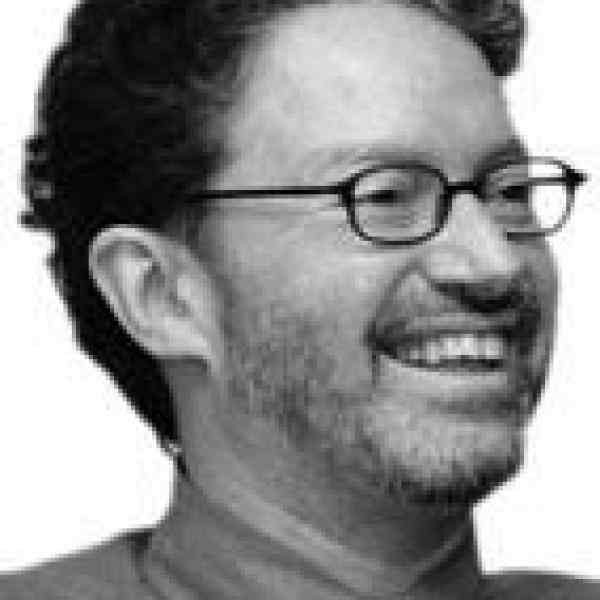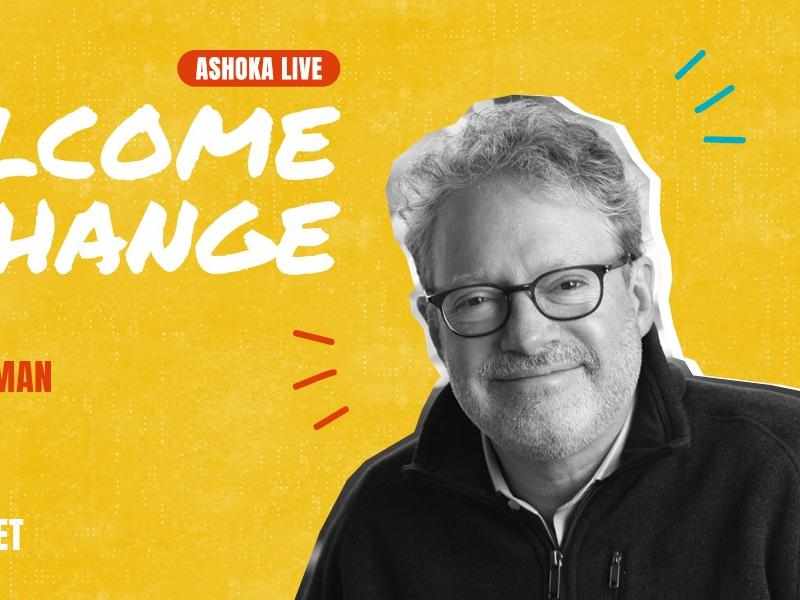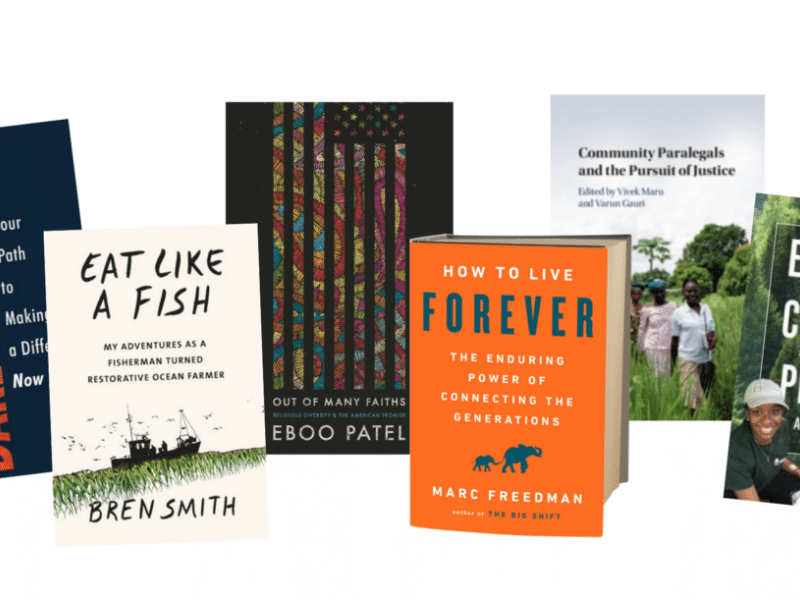Civic Ventures
https://www.civicventures.orgIntroduction
Marc Freedman is changing the role of the aging population. Through the creation of Life Options, Marc is building a vision that will help the growing population between retirement and old age incorporate their skills and talent into their communities.
The New Idea
Working with a variety of community members (from local governments to foundations and from universities to public libraries), Life Options provides a package of programs that assist communities in launching the ideas, infrastructure, and institutions to successfully engage the so-called "third age" population–those in their active retirement, typically 60-90 years of age.
The package begins with building the idea of successful aging through outlining a strategic awareness campaign that informs and engages the community. Life Options then facilitates the establishment of an infrastructure–a network of Lifelong Learning and Development Centers that progress into the education and growth of a senior-friendly community. As part of building the infrastructure, Life Options works with communities to engage funders, service providers, and community organizations to make the ideas and institutions sustainable. Finally, Life Options supports the communities in expanding opportunities for older people to become or remain employed or even start their own entrepreneurial endeavors–and to be engaged in civic activities generally.
Life Options bases its work on the insight that "third agers" will want to continue learning and can be of great service to their communities. Life Options works beyond the classes and volunteer opportunities traditionally available to seniors to be an emerging institution able to assist seniors in planning their "third phase," while providing the tools, connections, support, and opportunities to successfully navigate and transition into this new phase of life. At the same time, Life Options creates a proactive opportunity for communities to involve the talent and skills of their older citizens to address challenging social problems.
As the third age population continues to increase, Marc is focused on "transforming the aging of American society into a source of individual and social renewal." Beyond providing a toolkit to local communities, Marc will apply the principles of Life Options at a national level–improving the knowledge and awareness of the idea of successful aging, promoting policies that enable older Americans to become involved in strengthening communities, and creating more compelling opportunities for older Americans to serve their communities. As his vision becomes a societal norm, Marc affirms that "social problems will be addressed, solutions will be tried, and lives will be improved."
The Problem
A new phenomenon has emerged over the past generation–decreasing retirement ages coupled with increasing life expectancy. The growing period between the time adults end their careers, and when they become relatively inactive in society is now typically 30 years. It is this new stage in life that some are calling the "third age." As this population grows, numerous reports have emerged describing how the nation is "bracing" itself for the baby boomers to retire. By the year 2020, boomers will range in age from 56 to 74, nearly doubling the current 35 million seniors (65 years and older). Predictions of how this will affect society include declining economic markets, draining Social Security, and overextending Medicare. Fortunately for society, many of these boomers will not be able to afford the current trend of early retirement. And, fortunately for the individual, another portion will continue to "labor for the love of it."
Remarkably, at a time where the U.S. has the healthiest, most vigorous, best-educated, and fasting-growing aging population in its history, a percentage of this population going back to work for psychological reasons–because they are not feeling utilized by their community. "Opportunities are often limited," reports The New York Times. "The volunteer life of retired adults has vastly expanded_24 million Americans age 55 and older volunteer in some cause–and more would, if asked_[but] the new world of volunteering is neither clearly defined nor problem free."
There are a variety of volunteer opportunities from the National Senior Service Corps to the local United Way. "The challenge to leaders in business and government is to take this pool of talent and use it to solve pressing problems in the community–in a way that benefits both the seniors and the ones they are helping," argues Abigail Trafford of The Washington Post. "This period of extended vitality is so recent in human development that it has no agenda–and no road map for people to follow." This call for a road map to transform community problems extends beyond a need for better volunteer opportunities; it requires life planning and educational opportunities that senior or learning centers are not providing in a way that links back to civic engagement–to making the aging population an active part of society's problem-solving.
Communities also evidence the need for a road map. They are losing the talent and the skill of their older members, as seniors continue to flock to retirement communities that are outside the mainstream community. To reverse this trend, and retain and utilize aging populations in a successful way, communities need to be proactive and turn the growing trend of volunteerism in the direction of civic action.
The Strategy
Marc has been responding to this growing third age population since his work at Public/Private Ventures (PPV) in the late 1980s. The idea of implementing a mentoring program through building teams of retired adults to go into the most at-risk urban schools was behind the launch of his first program Experience Corps. As this idea took root and expanded beyond the capacity of PPV, Marc created an umbrella organization–Civic Ventures–in 1995 to help build Experience Corps and continue to search for additional methods to engage the growing number of older adults in the U.S.
After Experience Corps became a national model for engaging the third age population in service, Marc began exploring how to take it beyond volunteer activities like the ones Experience Corps and the National Senior Service Corps were providing; beyond the classes and adventure trips retirees were signing up for through their alumni associations or through programs like Elderhostel; and beyond traditional community senior centers. Realizing that both seniors and communities need to plan out how to utilize this new third stage in life, Marc devised the Life Options concept.
Since this insight in the late 1990s, he tested the concept with experts and practitioners across the field in preparation for the 2002 launch. During this phase, Life Options's consulted with various types of agencies and community organizations, sharing with them the principles of Life Planning, Retooling, Placement, and Community through their package of programs. Six types of Life Options pilots–laboratories in essence–have been launched around the U.S. in the past year. The Cleveland Foundation, which has invested $4 million over the next three years to launch the Successful Aging Initiative in Ohio, has created the most substantial pilot so far. The initiative has finalized a work plan and will implement each component of Life Option's tool kit within the next year. The second is through the Phoenix Public Library, in partnership with the Arizona Community Trust, which is organizing its constituency and will finalize the planning process this year. The Chicago Community Trust has begun gathering a planning team, as has the Area Agency on Aging in San Diego and Tufts University. Finally, Marc has begun discussions with several community colleges including Central Florida, Long Island (NY), and Portland (OR).
Life Options provides a space for the aging population to plan the transition to retirement and become renewed through civic engagement. At the same time, Life Options provides the tools and principles for community institutions to design a model that meets their social needs and can best engage the older members of their community. Marc is also working with key stakeholders, from funders to public policymakers, to ensure that society embraces Life Options, demand is met with this growing population, and aging norms shift.
After the initial phase and assistance in launching the programs, Life Options will continue to serve as a guide in evaluation and sharing of best practices. Marc is focused not only on creating incentives for the aging population to become involved, but also on creating ownership for the community to create meaningful demand that will be measured through substantial impact on social problems. For him this means creating key strategic partnerships with national organizations like the American Association of Community Colleges and Libraries for the Future, which will be able to spread this idea without duplicating institutions already existing in communities. His vision is that "individuals will look forward to the third age as a time when they will make some of their most important contributions to society, and can feel confident that when they are ready to make this transition they will have a place to turn for assistance in finding their way." Life Options will expand the contributions of America's aging population, renew civic participation and individual spirit, and address some of society's greatest needs.
The Person
Growing up in the 1960s and 1970s in Philadelphia, Pennsylvania, Marc gives himself the tagline of an "overly enthusiastic child." He attended high school with 6,000 students from his predominately white suburban neighborhood and made his niche in sports, until he began to realize the importance and power of people and ideas. This interest grew when Marc chose to study sociology and anthropology at Swarthmore College, and expanded when he began to implement his own ideas. He started the first college coffee shop on campus (still flourishing) because musicians had no place to play. "I have always had a knack for those simple, obvious ideas that just aren't happening," Marc remembers.
After earning an MBA at Yale in 1984, Marc spent 14 years at Public/Private Ventures (PPV), a national nonprofit organization whose mission is to improve the effectiveness of social policies, programs, and community initiatives, especially as they affect youth and young adults. He carved out a role focusing on mentorship and urban youth service in the United States. From this position, Marc became acutely aware of the gap in services for youth. But even more unexpectedly, he discovered the volume of aging adults who were willing to help their community if given some "direction and connection." Program after program, Marc found that mentoring was having dramatic impact on high-risk youth, and that the human element could not be replaced by a simple curriculum or activity. This insight led Marc to cofound Experience Corps in 1995, the organization that "places a critical mass of older adult volunteers in schools and youth-focused organizations in their communities."
By 2002 Experience Corps had grown to 15 cities around the nation, along with an organization in London adopting the model. It has served as a best practice for the field, and Marc recently helped raise $20 million to take Experience Corps into even more communities. However, now that the idea has replicated and the funds are secured to sustain its growth, Marc is handing off the reigns to focus full-time on his latest idea–Life Options.
Marc has been referred to as a "retirement guru"–keynoting at numerous conferences and been quoted in major news publications across the nation. In his latest book, "Prime Time," Marc boils his work down to the fact that "we need to uphold and develop the option for public service that constitutes the greatest potential 'win-win' combination for individuals and society." It is this philosophy that guides him in supporting and counseling other emerging innovations that engage older Americans in community activity and helps develop his own vision further.

 Tile image
Tile image Tile image
Tile image